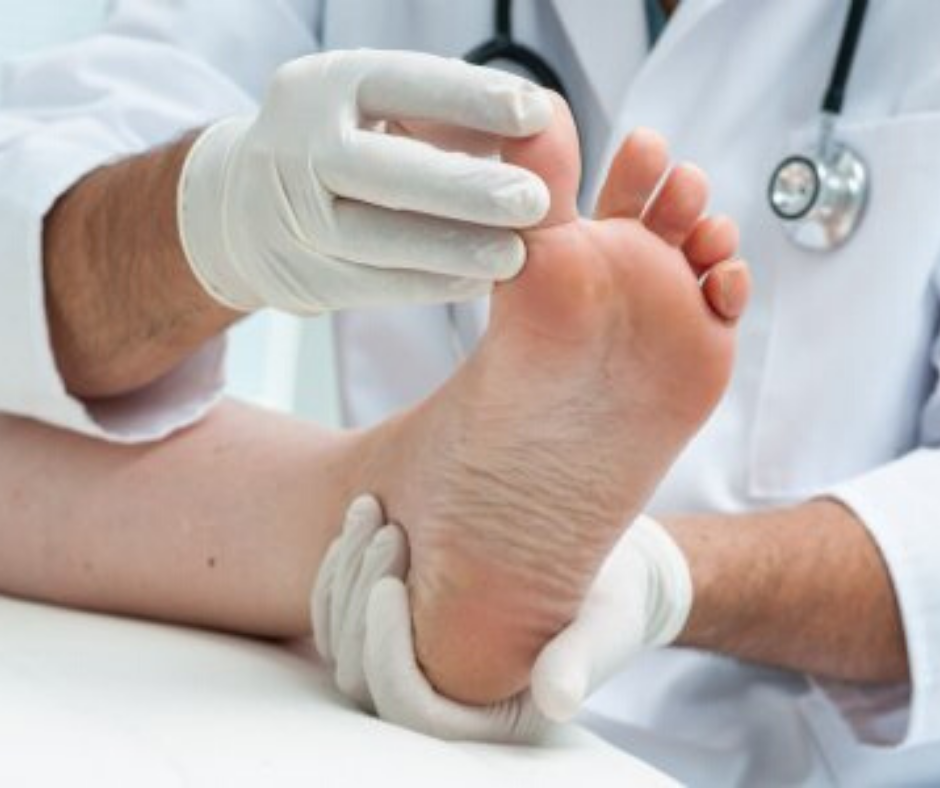
6th April 2020
Source: The Malta Independent
Diabetes Mellitus (DM) commonly known as diabetes, is a chronic, metabolic disease characterized by high blood sugar levels over a long period. It affects a large number of people, with many more remaining undiagnosed. According to the International Diabetes Federation, there are over 40,000 people between the ages of 20 and 79, living with diabetes in Malta. The most recent data report in 2019 predicted that nearly half of the Maltese population will be affected by 2045.
When there are persistent high glucose levels, the risk of developing complications such as heart attacks, strokes, poor blood circulation to the legs and damage to the eyes and kidneys, increases. Nerve damage, circulatory issues and infection can lead to serious foot complications. However, simple, everyday measures will drastically reduce foot complications. The following are self-management foot care strategies that should be incorporated into one’s daily routine.
- Daily washing of feet – this is a simple way to keep feet and toenails clean and prevent infection. It is very important to check the temperature of the water prior to washing. Dry in between the toes well with a soft towel after washing, to prevent cuts that can lead to infection.
- Avoid walking barefoot – it is safer to always wear shoes and socks or fastened slippers, even inside, to avoid injury. It is important to check that there aren’t any objects inside the shoe prior to wearing them. Check that lining is also smooth.
- Use of daily foot cream – this will keep the skin healthy and prevent it from cracking. Avoid applying cream in between the toes as it can moisten the skin and make it more susceptible to cuts and infection.
- Footwear and hosiery–avoid wearing shoes or socks that are too tight or too loose. The use of diabetic socks or cotton socks without seams is advised to avoid skin breaks. When choosing footwear, it is important that shoes are wide fitting, deep, comfortable, and can be fastened to avoid friction.
- Daily foot self check-ups – it is extremely important to check the bottom of the foot and in between the toes, for any cuts, redness, sores, blisters, dry cracked skin, temperature changes in the foot, or any other unusual changes. If these are present it is advised to seek help from a podiatrist.
- Self foot check-ups before and after exercise – the diabetic foot is extremely susceptible to injury during exercise. Therefore, it is of extreme importance that feet are checked thoroughly, before and after exercise. If any changes are discovered, it is wise to seek professional help from a podiatrist.
Apart from the above-mentioned guidelines, at least once a year, a diabetic foot examination by a podiatrist is necessary. This examination typically includes an assessment for any skin changes, structural deformities such as hammer toes and bunions, circulatory issues and nervous issues.
An area that has in recent years attracted significant interest for the prevention of foot ulcerations, in conjunction with the above mentioned guidelines, is the monitoring foot temperatures. It is known that prior to skin breakdown and ulceration, the temperature of the designated area in the foot increases due to localised inflammation – this is known as a ‘warm spot’. This is often brought about by footwear, when there is increased friction between the skin and the shoe interface. Hence, foot temperature monitoring at home could greatly help individuals to identify the ‘pre-ulcerative’ foot and to predict complications at a much earlier stage. At present, the technology used to detect foot temperatures is limited as it only allows the wearer to take readings statically (without shoes or socks), through the use of infrared thermometers or foot mats. Researchers at the University of Malta (UM) in collaboration with Mater Dei Hospital are currently developing smart socks which have embedded thermal sensors spread across the sole and top of the foot that can detect dynamic temperature changes. This new technology is unique as it gives the wearer the opportunity to utilize it at all times during daily activities.
This is a clever way of providing useful information in real time not only to the user, but also to the clinician, to get a better understanding of what is going on. With the provided knowledge from the app, in case of an alert the patient can refrain from their ongoing activity to prevent any further damage. This innovative technology will transform care for people with diabetes, will aid the clinician to better devise preventive care management, and will significantly reduce the financial burden on our healthcare system by not only reducing the number of ulcerations and amputations, but also improving patients’ quality of life.


